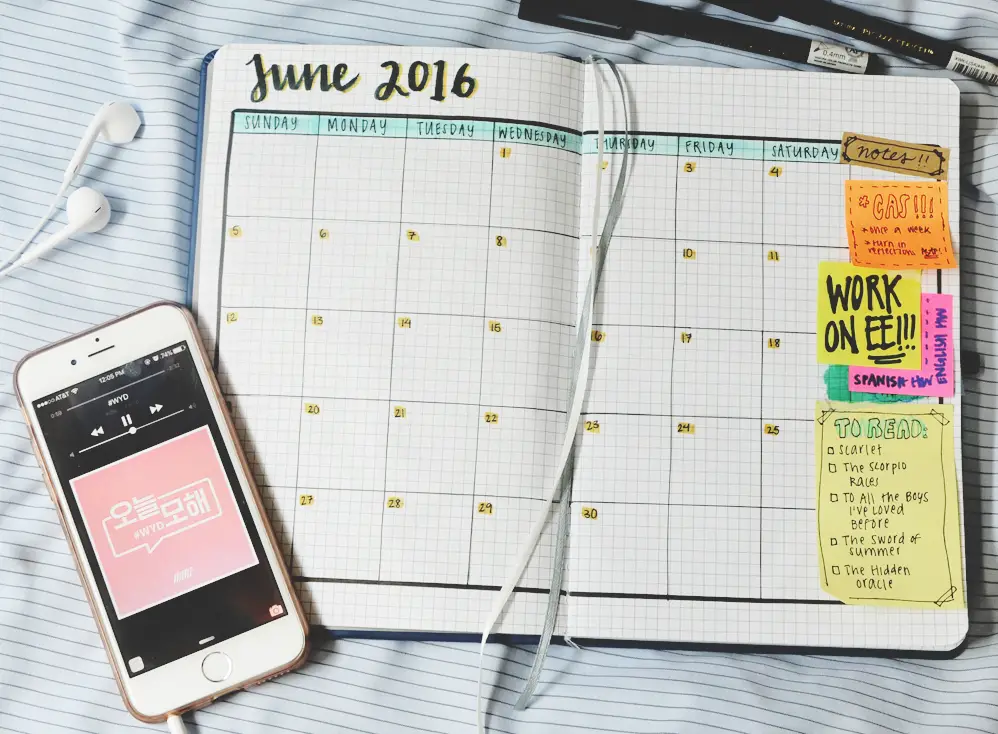No time of year is too late to start good habits, but the beginning of the semester is the best time to adapt good behaviors. Organization is key in college and life in general. Here are five simple ways to become better organized.
1. Bullet Journal
No list of organizational tactics would be complete without the bullet journal. A bullet journal is a notebook that serves as an agenda, to-do list and anything and everything in between. Named for the bulleted lists that populate it, Bullet Journals can be designed as artistic or minimalistic as a student wants. Some have time for intricate calligraphy while others use their journals as a quick and simple way to stay organized. Outside of to-do lists and agenda entries, bullet journals house reading lists, bucket lists and even an index in the front to keep track of the numbered pages.
The beauty of the bullet journal lies in the fact that it’s tangible. The concept is that a user takes it everywhere and uses it as the sole place to record information. While the official bullet journal website sells journals to use, any old notebook buried in a desk drawer would suffice. The only commitment required in maintaining a bullet journal is mapping out activities for the upcoming week. As each task is completed, it gets crossed off so your focus can move to the next task. The bullet journal’s accessibility and simplistic style lend it to easily creating order amongst a hectic college schedule.
2. Pomodoro Technique
Everyone has experienced it before: writing one page of a paper and then spending the next hour scrolling through social media. To better manage a work/leisure balance, the pomodoro technique helps to complete a chunk of work while also providing breaks.
First, write down a list of everything that needs to be accomplished by the end of the day. After setting a timer for twenty-five minutes, a student must do nothing but work until the timer beeps. In only twenty-five minutes, it’s surprising how much work can get done without the distraction of social media. Write an “X” next to the item on the list to symbolize the twenty-five minutes worked on the task.
After twenty-five minutes, a five-minute break occurs. This break is good for the bathroom, stretching or Snapchatting. Another twenty-five minute work period follows this five-minute break. After completing this cycle four times, take a longer break (fifteen to thirty minutes should be enough time to feel ready for more work) and then go right back into a twenty-five minute session!
Keeping vigilant about doing work during the work periods ensures that work gets done. If any distractions present themselves, such as a dire need for food or call from a friend, the pomodoro must be restarted. All that’s needed for the pomodoro technique is a sheet of paper to keep track of tasks and a timer. The Marinara Timer is a good place to start.
3. Cleanliness
When living in a small space such as a dorm room, every inch of space is precious. It’s easy to feel drowned in clutter after leaving just two jackets out. An easy way to feel order in your life is to do a little bit of cleaning everyday. Even taking a few minutes in between classes to straighten out pillows on a bed helps. Mess causes stress, so staying on top of cleaning is key to mental well-being during the school year.
If living in a dorm, negotiate cleaning schedules with roommates. Chores such as vacuuming, taking out the trash and cleaning sinks seem simple, but can become sources of stress with schoolwork piled on top. Speaking of piles of schoolwork, most professors are transitioning into paperless teaching, but some still stick to paper syllabi. A sturdy folder to keep papers in helps to keep track of important documents, such as syllabi. If a teacher hands out written instructions for an assignment, there is no reason to keep those instructions for weeks after the due date.
Dispose of items as they become obsolete. Poor ventilation in dorm rooms also creates issues with smells. Avoid hanging wet laundry in the room, and throw out foods that produce odors elsewhere, if possible. Just in case, though, keep perfume or air fresheners handy. As long as items that are no longer of use are going out of the room and a loose schedule for cleaning exists, schoolwork can become the first priority.
4. Utilizing Technology
In addition to keeping a tangible bullet journal, using a phone as an organizational tool should come as second nature. With the increasing amount of time that young adults spend on phones, it only makes sense to put that time to good use. Using the iPhone’s pre-existing apps such as Reminders and Notes is a good place to start, but more apps exist for students.
The myHomework app allows for tracking multiple assignments in multiple classes at the same time. Priority and due dates can be linked with certain assignments. myHomework also has an online platform, so checking and updating the status of homework can be done anywhere at any time.
The Newton mail app works on Windows, Mac, iOS and Android to organize email. Most students have at least two emails including, but not limited to, a school email and a personal email. Newton helps to organize these different mailboxes through an uncluttered design. Apple’s “There’s an App for That” applies to everything, including organization.
5. Exercise
As insignificant as exercise may seem in an organizational setting, it has its place. Part of being organized is feeling organized. High levels of stress can make any student feel harried, and exercise is a simple way to deal with stress. As part of a daily routine, students should set aside time just for a walk around campus or exercise class in the school’s fitness center.
There is no better time than today to try to become a more organized person. Adopting new habits can be intimidating but worth it if done right. However, everybody is different and if a cluttered space is a comfort, then keep doing what works. Organization and mental well-being differ from one person to the next, so get out there and start making changes.

















